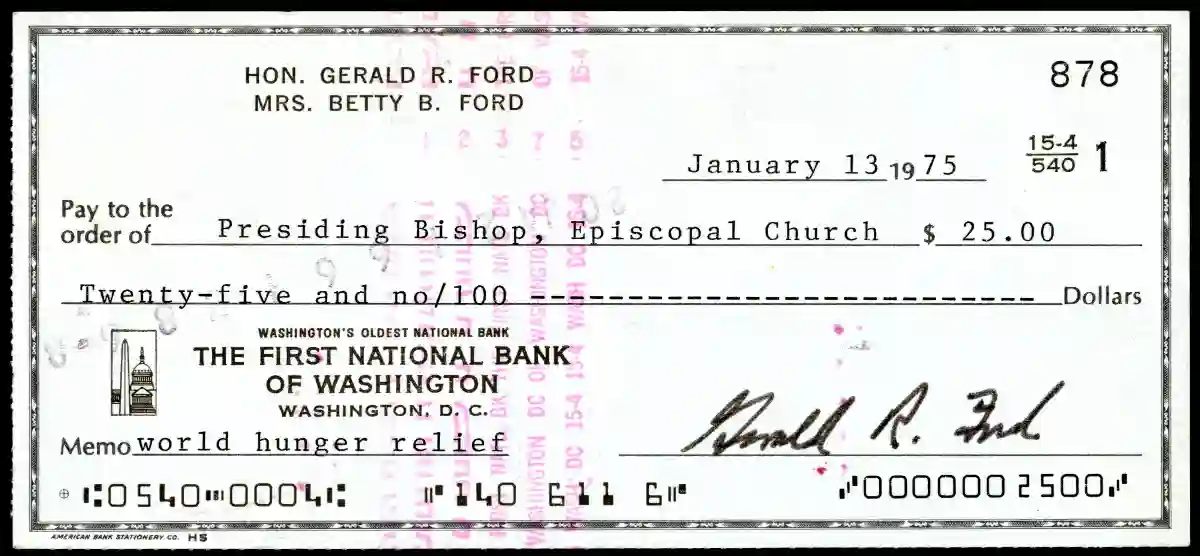Today, we are going to talk about something tough, which has to do with what to do if you get fired and how to ask for your job back. Getting fired can happen, maybe a couple of times in your career. Firstly, understand that getting fired is not a big deal. It usually means you have made some serious mistakes. If you react badly, such as by getting angry, denying your part in the mistake, or talking badly about your boss afterwards, it’s not going to help. Instead, when you are leaving, you want to make them think twice. You want them to wonder if they made a mistake in letting you go. Now, this is the emotionally appealing aspect we will take advantage of in this article after being fired.
How to ask for your job back after being fired
1. Don’t Take It Too Personally
Being let go from a job usually isn’t personal. It’s more about whether you were the right fit for the job. It’s similar to dating. Sometimes, even if you have great respect for someone or find them attractive, the chemistry isn’t there. It’s the same at work. You might not have been the right fit for the team. If you take it too personally and react negatively, it can make things worse. The people you’re reacting against might feel they need to defend their decision, which could lead them to reinforce their reasons for letting you go.
So when you get fired, there are three main things to keep in mind. First off, it’s good to be thankful for the chance you had at the company. Just say something like, ‘Hey,’ and put it in the right way. Remember, they’re letting you go, and it’s not easy for them either. No one likes to fire someone; it’s a tough spot to be in. You’ve probably felt it too, if you’ve ever had to let someone go. It’s not fun. So, try to make it less awkward for them. It might seem hard to be that generous, but you can do it. Then, you should say, ‘Hey, I get why you’re doing this. I’m grateful. I know it wasn’t a simple choice. I’ve learned a lot here, enjoyed my time, and really learned from you. Thanks for that.’ And that’s pretty much it. After that, it’s best to just leave the room.
2. Go Home for Now
The second thing you should do is quite personal. You’re going to go home, you might cry, and you might want to sleep—maybe even eat a whole gallon of ice cream. It’s okay to do that, but maybe not the whole gallon at once; spread it over three days. But there’s something else you should do. You should try to learn something. You can turn a bad situation into something valuable if you learn from it. So, if you sit down and think, ‘What can I learn from this situation?’
I can share my own experience. I was fired once from a store job where I had to unload trucks and count every single item that came off. Nowadays, robots usually do this. I had to do it, but I’m more of a big-picture, strategic thinker. Counting things like ‘How many batteries are there?’ as a high school student showed me I wasn’t in the right job. They didn’t exactly fire me, but they shifted me to a role that basically said, ‘Don, you’re too slow at this.’ It felt like being fired, but I realized from that experience that I’m not the type of person who’s good at detailed, meticulous inventory work.
3. Don’t Speak Poorly About the Company to Others
The third thing you should do, which might be the most important, is this: after you’ve been fired, if someone asks about your job, you should say, ‘You know, I was actually let go.’ Then, repeat your prepared statement, something like, ‘I really liked the company and enjoyed working with my colleagues. It just turned out that I wasn’t the right fit for them, and they weren’t the right fit for me. But I learned a lot and it definitely helped my career.’
What you shouldn’t say is something like, ‘Those jerks didn’t realize how good I am. It was a terrible place to work, and I’m going to…’ Saying that will get back to your former employer really fast. It doesn’t matter who you tell; it always gets back. I’ve seen it happen. Within 24 hours, I hear about it. People think they’re being discreet, or they try to influence other employees, creating a kind of ‘us against them’ situation. But it always reaches me.
Then, sometimes an employee comes to my office, concerned about how unfair the dismissal seemed. I don’t like to speak ill of anyone, but I explain the situation by mentioning three specific things the person did. Every time, the employee is shocked and says, ‘Really? That’s what happened?’ They understand and usually apologize before leaving. So, think about it. Who does this approach make look bad? It makes you look bad, not me.
4. Reflect on the Reason for Your Job Loss
Many things could have led to the event, each with its own unique challenge in getting the job back. Consider the following, depending on why you lost your previous job:
a. Quitting
While quitting is different from being let go, the way you left the job could be concerning if you’re attempting to regain your previous job. It’s easiest to regain a job if you left amicably, as your former employer might be open to reconsidering you for the job role.
If you left on negative terms, like having said disparaging things about your former job or co-employees or not providing enough notice, you need to show the company that you can reintegrate yourself effectively into the company.
b. Layoffs
The ideal case when seeking to regain a lost job is when the company is compelled to lay off staff. You might be better positioned to regain your job if temporary financial challenges made the company cut some jobs that they’re now bringing back. You can pitch yourself as the right person for the job since you won’t need any more training based on your previous experience if your former performance on the job was strong before the layoff.
c. Unfit for the job role
Sometimes, companies fire employees because they don’t fit well with their culture or internal working structure, even if they show acceptable performance. If you were let go because they didn’t think you fit into the company’s culture, you might be able to regain your job if you show you’ve improved and now better understand how to fit into the company’s culture.
An employer can fire you for being a slow emailer or showing inappropriate behavior but they cannot fire you due to your gender, age, race, religion, natural origin, or disability status—Polaris Law Group, LLC. You can’t also be fired for:
- making a workers’ compensation claim;
- requesting family leave;
- requesting medical leave;
- pregnancy; or
- making complaints about your workplace experience
d. Performance concerns
It’s not an ideal case when you’re working to regain that job if you were let go from a job because you failed to meet performance standards, but that doesn’t mean you can’t achieve your goal. If you’ve changed certain underlying causes since you left the job, or you took a similar job where you developed the necessary skills to succeed on the job, that could raise your opportunities of getting your former job back.
e. Inappropriate behavior
If the reasons for the termination are unrelated to your work performance, you have to show your previous employer that the issues that led to the firing are no longer in your life. You have the best chances of being rehired by showing the employer that you’re reliable. And if you have been wrongly accused, you could always legally reclaim your job.
5. Prove That You’ve Addressed the Problems
Whatever the reason for your termination, you need to show that you’ve corrected the problems if you want to regain your previous job. Having solid examples that you can pinpoint is the best way to show you’ve made the necessary improvements to regain your job. If your job was terminated due to a workplace incident, you could say you took some anger management classes, for instance, or show that you’ve developed new skills from receiving a new certification.
Even if addressing these challenges doesn’t lead to your recovering the job, it’s useful professional development that can assist you with potential job applications.
6. Review the Company’s Rehiring Policy
Understanding any policy at the organization concerning rehiring practices is helpful. If your previous employer has a human resources department, that’s the best place to contact.
Your previous employer may completely exclude rehiring former staff or have conditions they need to meet. Knowing the policy can ensure that your application to regain your job aligns with the organization’s rehiring rules.
7. Ask About Being Rehired
After you’ve checked the company’s policy and prepared the necessary skills and behavioral changes, it’s time to apply for your job back. If you submitted application for an open job listing, you want to note the changes you’ve made either in your cover letter or speak with a previous manager if the organization accepts calls or emails.
If your previous job isn’t currently listed, your best option is to speak directly with the organization, asking them if they can rehire you. Be professional in your first communication with them, telling the company that you understand the underlying reasons for the termination of your previous job and are now ready to display improvements, making you better suited for the job.
8. Remain professional upon a refusal
If you have a situation where you need to repeat something, make sure to keep it positive about them and yourself. This approach frames your experience in a less negative light and shows your professionalism. Being fired can lead to a downward spiral that harms your career for years, so avoid that. I spoke with a CEO of a nearly billion-dollar company recently. He shared a story about a time he really wanted to speak badly about someone but chose not to. He committed to staying positive. Years later, when he was being considered for a top job at a billion-dollar company, the hiring firm contacted the person he had resisted bad-mouthing. That person ended up giving a positive reference, focusing on the good aspects and how well the situation was handled.
This positive feedback helped the CEO land a multi-million dollar position. It’s a reminder not to let immediate emotions and insecurities ruin your long-term career prospects.
Conclusion
Okay, so here are all the steps you can follow to ask for your job back after being fired. This easy advice involves eight steps, which we have looked into. Most importantly, always show gratitude for the job you had, pick up a lesson from the experience that can help you move forward, and think of something nice to say about them. Don’t forget to say something good about yourself too. You might say, ‘I gained a lot of knowledge; they really helped me grow professionally. I’m excited about what comes next.’ That’s focusing on you. Or say something like, ‘It was a fantastic place to work; I really enjoyed being part of their team.’ Basically, find something positive to mention. So, those are your steps, hopefully, you’ll be rehired.





